Graham Steven of Natural England led a walk round Aldermaston Gravel Pits, a new venue for the Society, on the morning of Saturday 9 September. There is no public access to the site, which is kept locked. Much of the site, which abuts the Kennet and Avon Canal, was formerly occupied by gravel pits. The section of the site closest to the A340 Aldermaston Wharf to Aldermaston village road was more recently used as a gravel processing site, with material brought in from other sites for processing. Dangerous areas of deep silt arising from gravel washing cover parts of the reserve. It was a very hot morning. (According to the Department of Meteorology, the 31.4 ⁰C maximum temperature measured at the University of Reading that day made it the hottest September day for over 100 years.) The walk started near the entrance, investigating an extensive area of dry stony ground, colonised by a wide selection of plants, including Scarlet Pimpernel, Thyme-leaved Speedwell, Heath Speedwell, Wall Bedstraw, Common Centaury, Perforate St John’s-wort, Wild Teasel, Common Stork’s-bill and Biting Stonecrop. Hare’s-foot Clover was a new record for the site. Yellow-wort and Fairy Flax, more usually found in our area in calcareous locations, were a surprise finding. Most of the Blue Fleabane had already gone to seed. Also seen were Canadian Fleabane and the hybrid between Blue and Canadian Fleabane. Two flower spikes of Autumn Lady’s-tresses, recently discovered by Graham on the reserve for the first time, were another surprise sighting. The nearest local population is at Greenham Common. This is another plant which is associated with calcareous soils. Dog’s-tooth Lichen, which is anchored by tooth-shaped ‘roots’, covered some of the bare ground. Graham pointed out Early Hair-grass – a fine-leaved grass of sandy, gravelly places on acid soil. Hundreds (or perhaps thousands) of Ivy Bees buzzed to and fro just above the ground. Their round emergence holes were ringed with excavated sandy soil. A few newly-emerged females were seen at the centre of balls of males.
The next part of the walk was through a cleared damp area. In winter, the water is typically about a metre deep, but the area normally dries out in summer and it was fairly dry under-foot. There were big patches of Nodding Bur-marigold, together with Gypsywort, Water Mint, Hemp Agrimony, Marsh Yellow-cress, Marsh Woundwort, Cyperus Sedge and Sweet-flag. There was a small area of reed-bed with tall plants of Common Reed. A Green-veined White butterfly was seen nearby. The next section of the walk was across an area of dry scrub. Two unusual plants were amongst the colonists here. A low clump of Pennyroyal had small whorls of pale mauve flowers. Broad-leaved Everlasting-pea was another uncommon find. Other plants seen here included Bristly Ox-tongue, Black Medick and Sweet Briar, with plentiful glossy red hips. It was a good area for butterflies – Common Blue, Brown Argus, Small Copper, Meadow Brown and Small Heath were seen, together with Peacock and Painted Lady on a nearby Buddleia bush. Several Treble-bar moths were also seen.
The walk then continued along the main trackway through the reserve. Almond Willow was one of the trees growing beside the track. New catkins could be seen amongst the leaves – these are in addition to the ones which are produced in spring. On the left of the track were two lakes, the first small and the second much larger. The whinnying call of a Little Grebe could be heard, coming from the larger lake. Also seen here were Coots and a Moorhen. About 10 pairs of Cormorants nest on an island on the larger lake. The walk continued along the main track, where Marsh Bedstraw, Skullcap, Wavy Bittercress and Upright Hedge-parsley were seen. Corn Mint was the third member of the mint family which had been seen that morning, in addition to Water Mint and Pennyroyal. Graham suggested that an unusual St John’s-wort flower was a hybrid between Square-stalked and Perforate St John’s-wort. Another single spike of Autumn Lady’s-tresses was spotted in the middle of the path. A toadlet and a number of froglets were found down in the long grass along the ride. Beyond the first two lakes was a third lake, home to a pair of Mute Swans. In spring, there is a Heronry at the far end of this lake. On the opposite side of the track to the lakes is an area of silt deposits. A dense tangle of willows had grown here, then collapsed inwards. On the walk back along the track, Comma and Red Admiral butterflies were added to the species count.
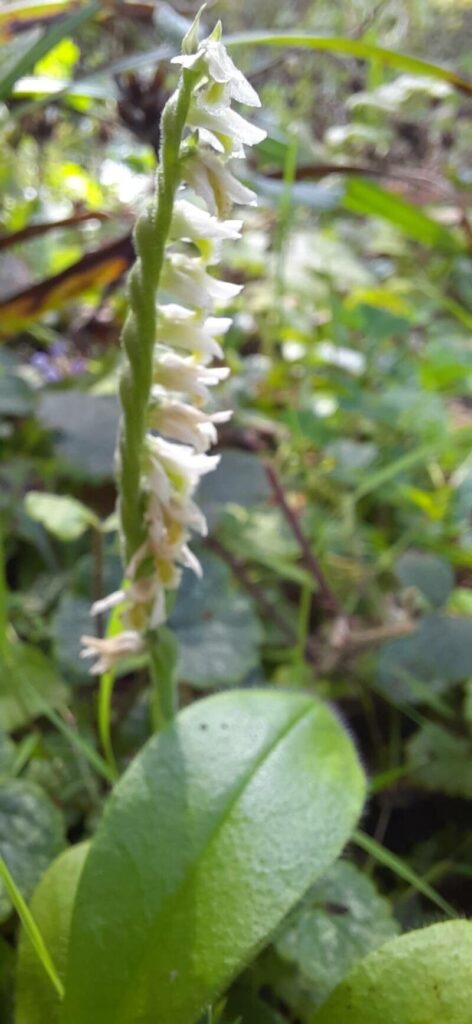
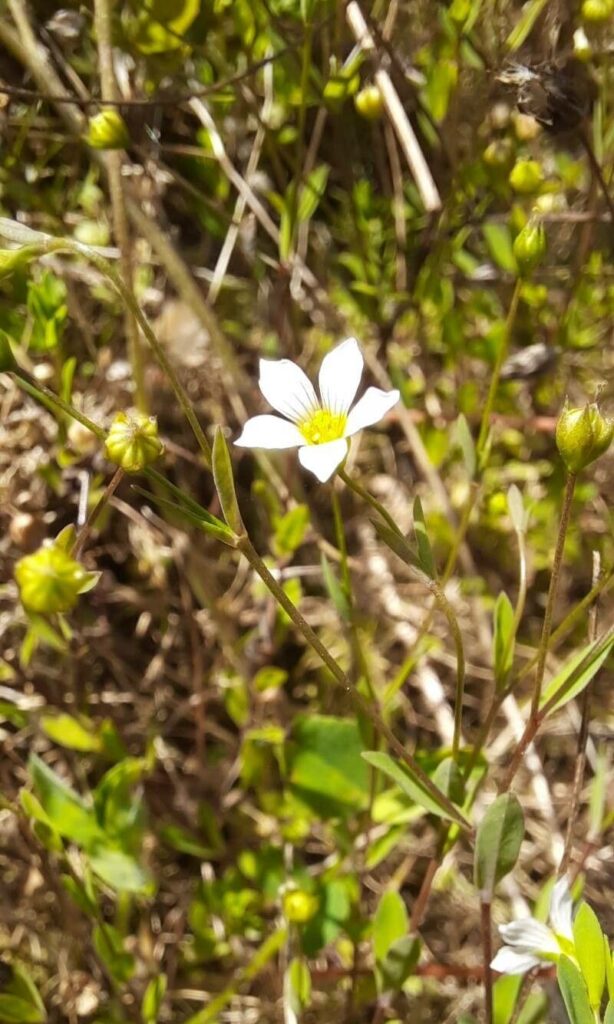
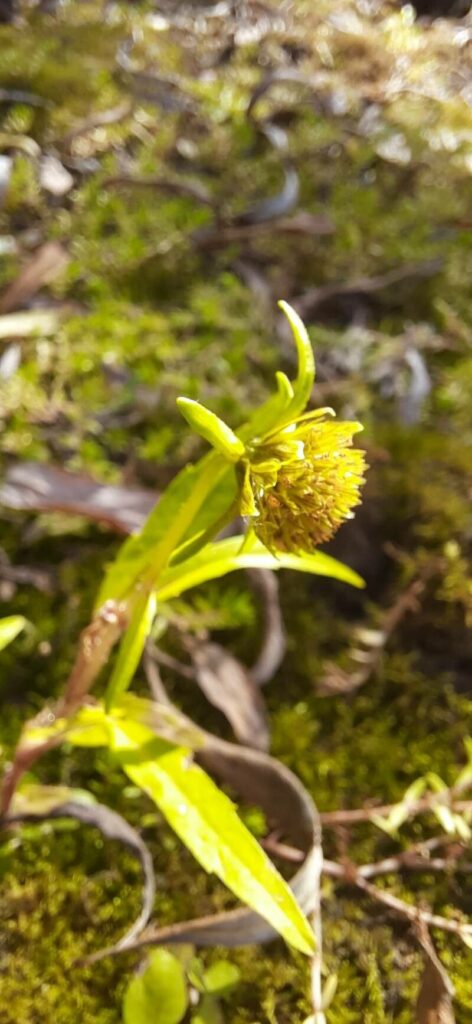
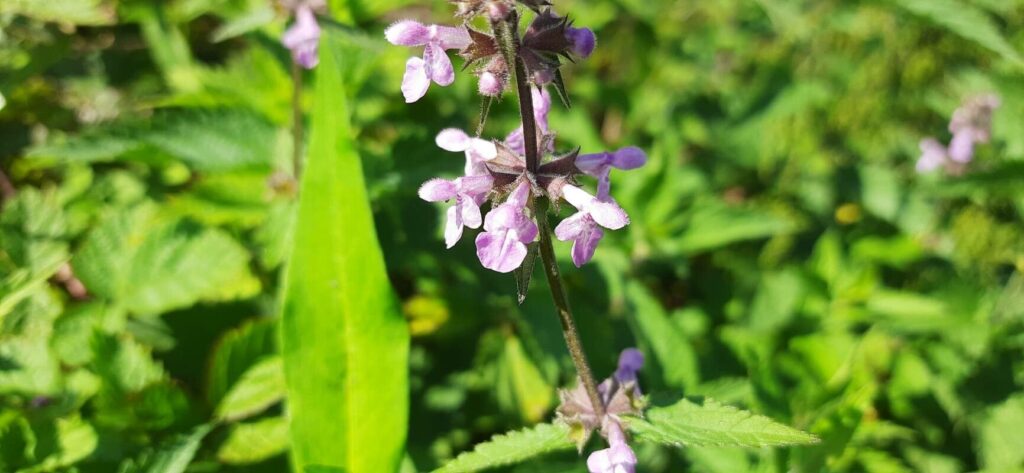
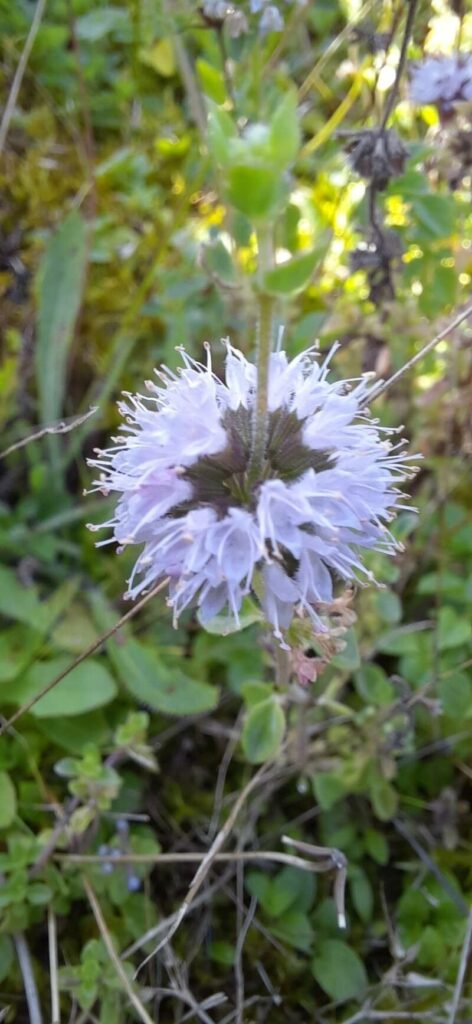
Pictcures by John Sharpe
